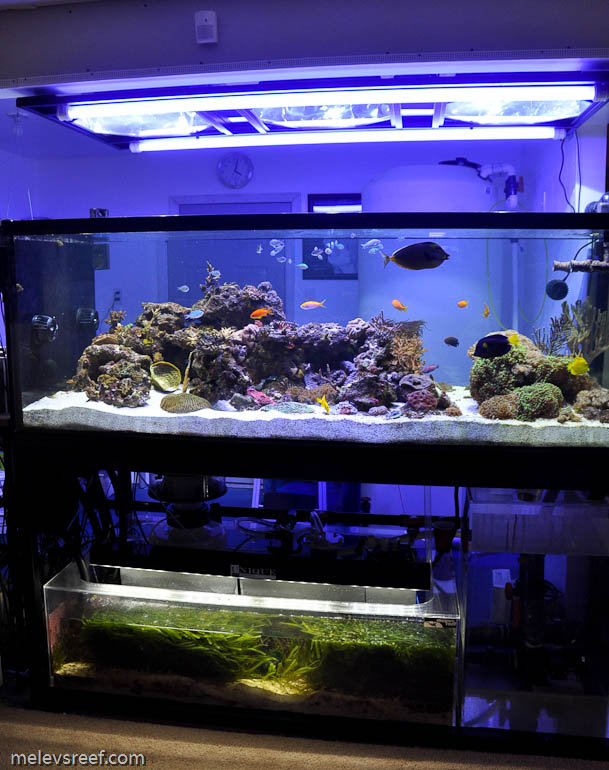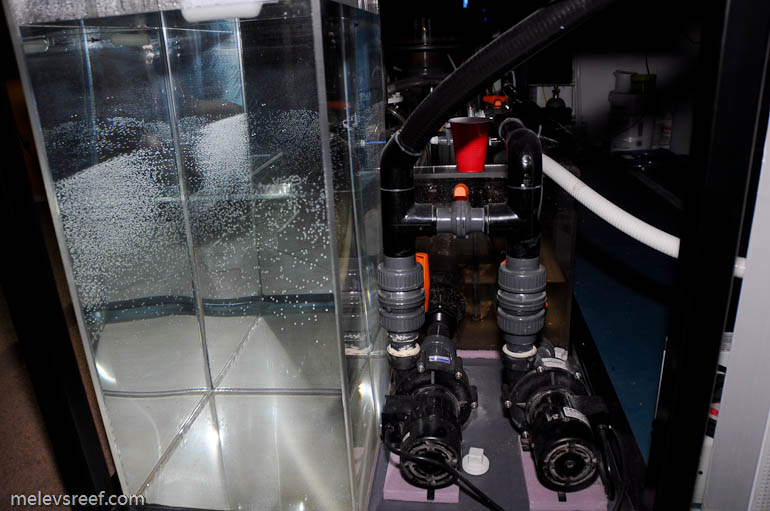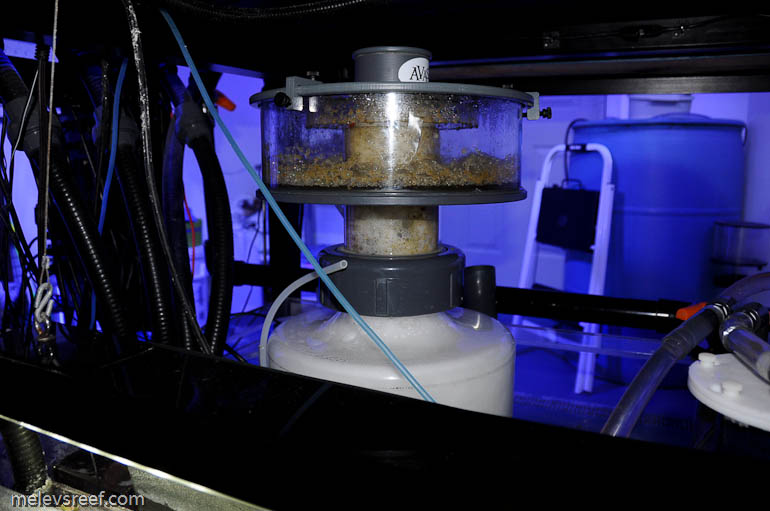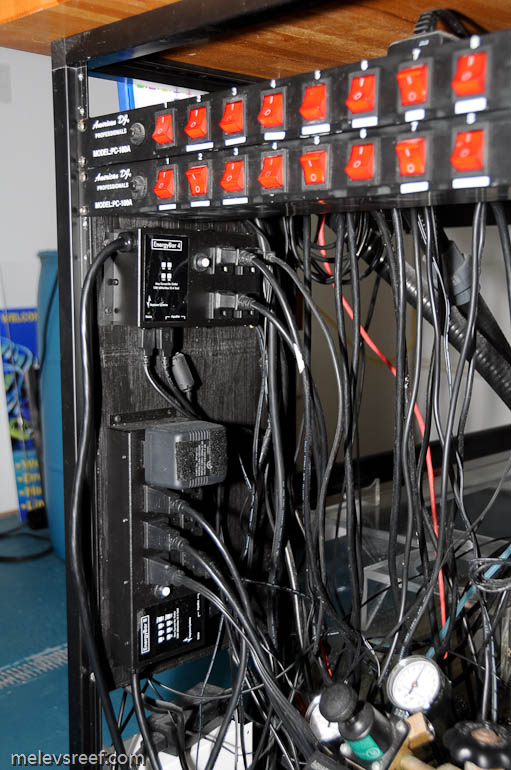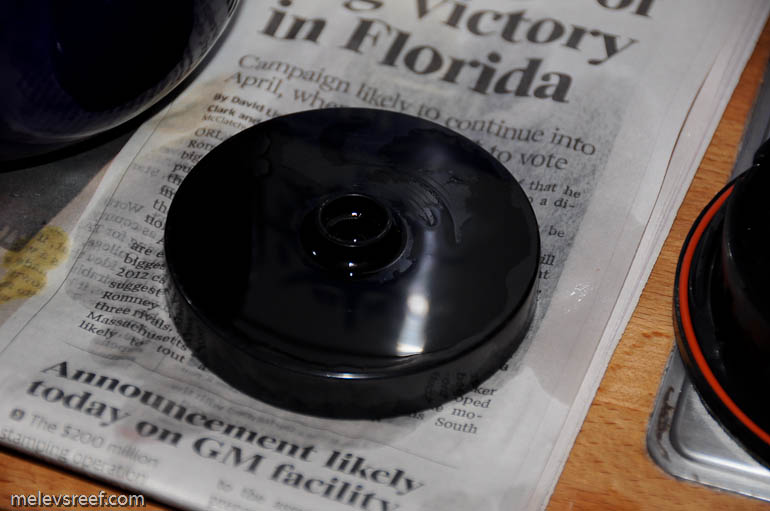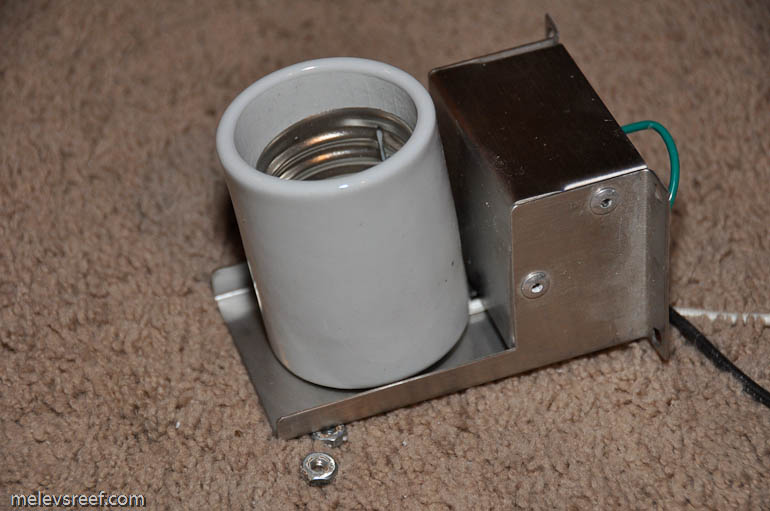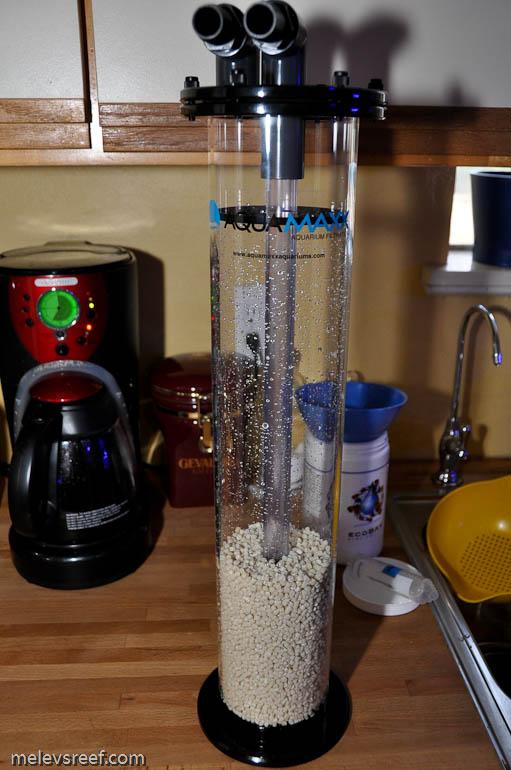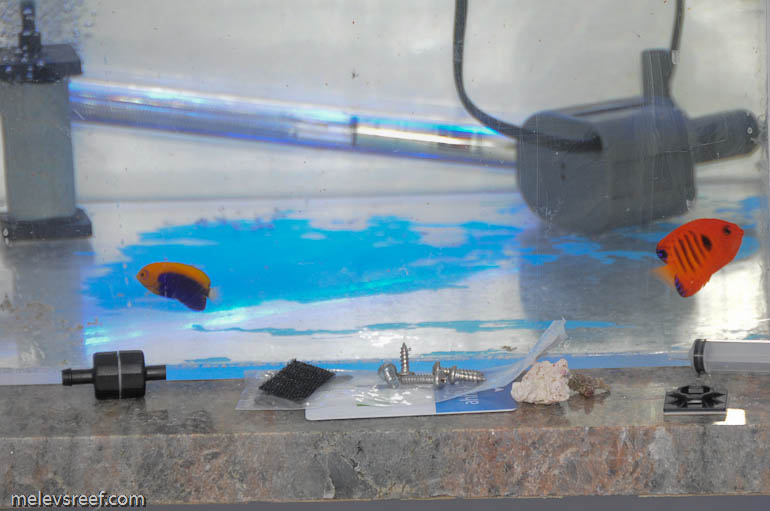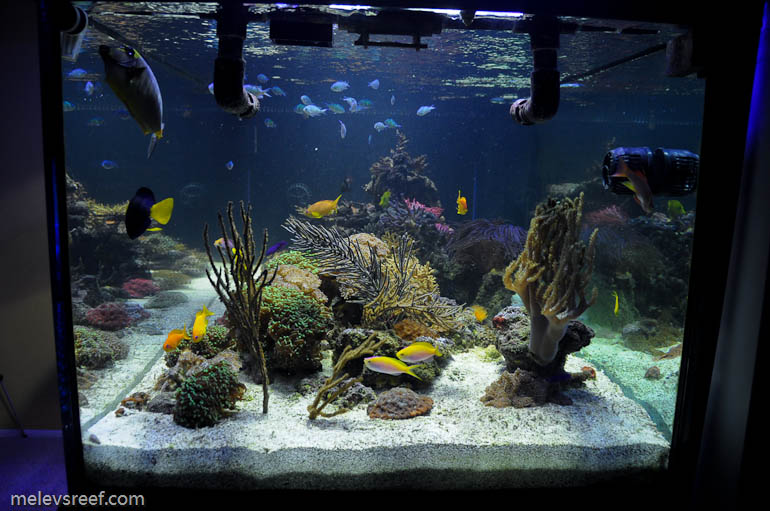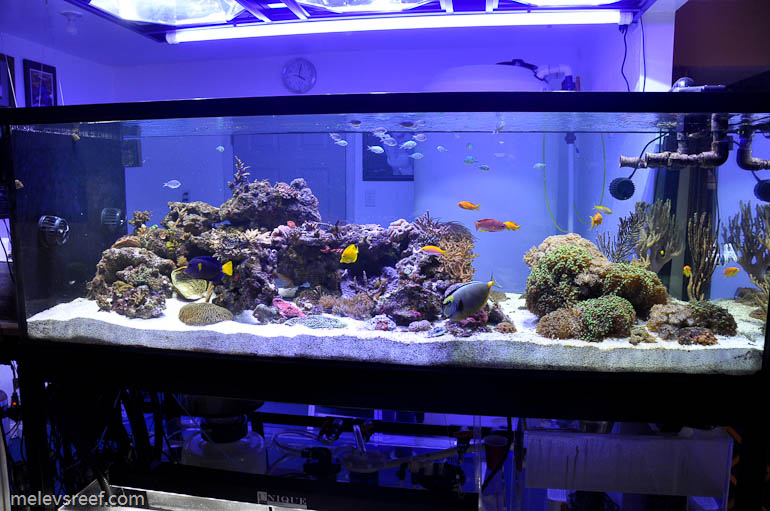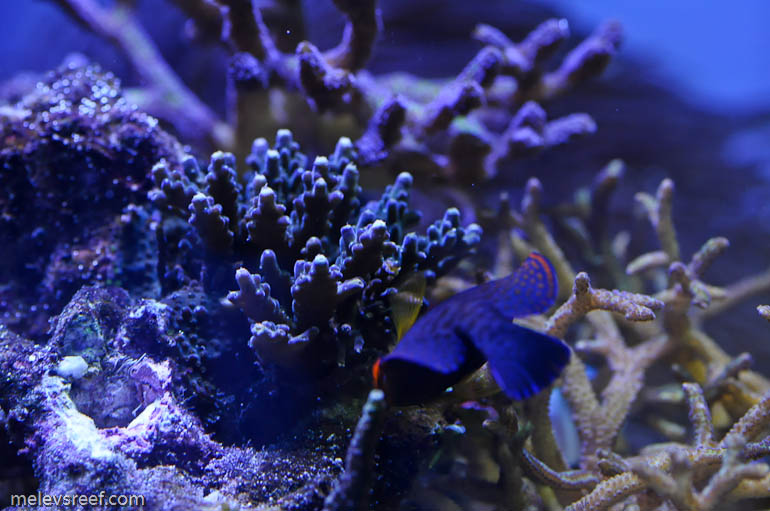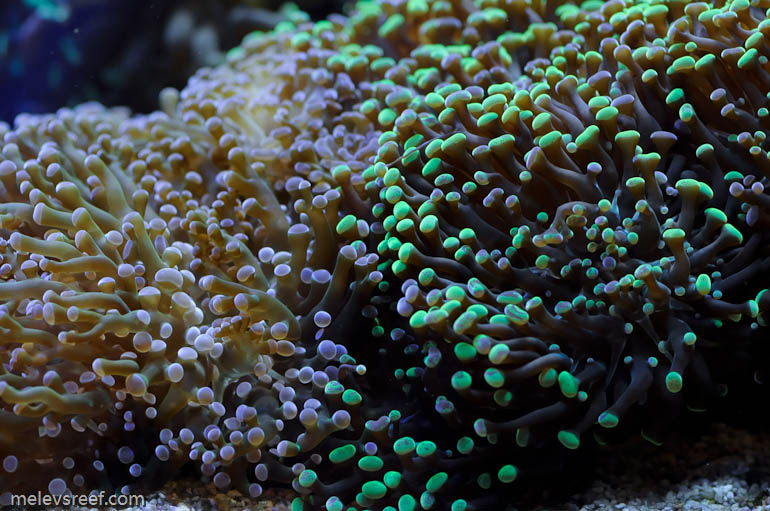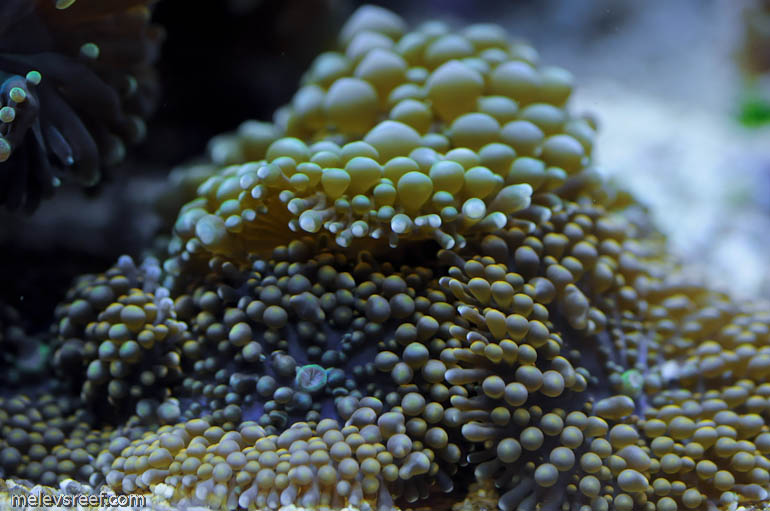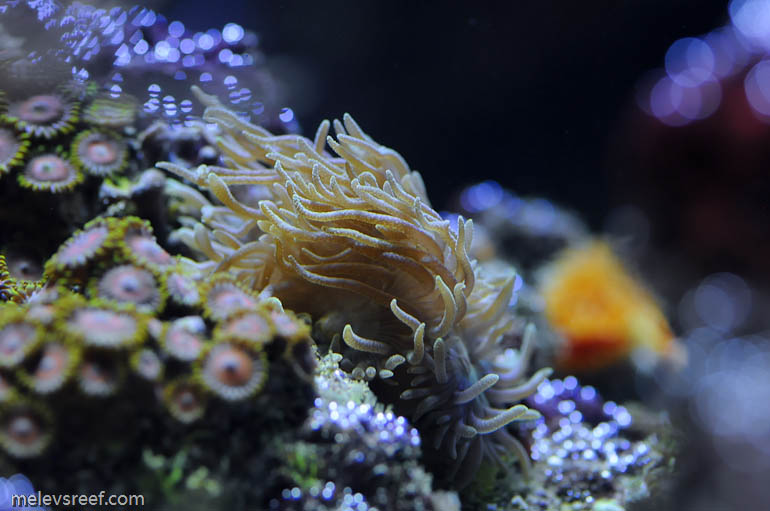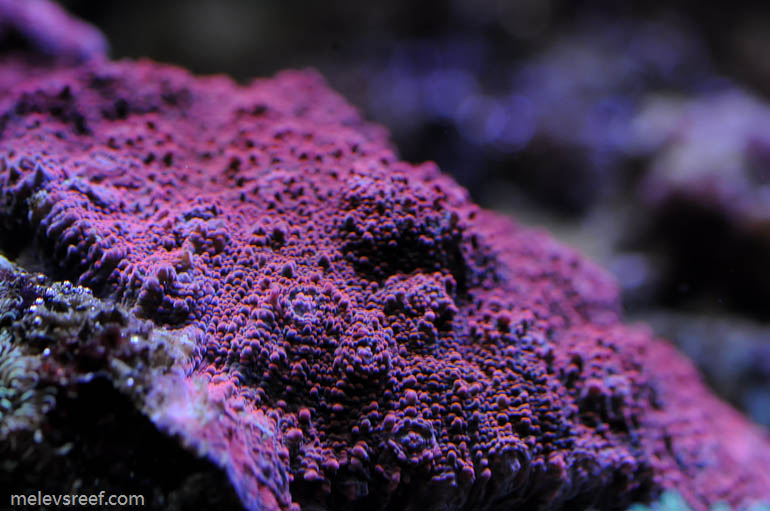Day 365 Ė One year old today
by
, 02-06-2012 at 11:04 PM (12053 Views)
Today, my reef turns one year old, but I canít really feel the reason to celebrate. If anything, Iíve been really frustrated that my reef isnít humming along nicely and showcasing beautiful corals that have been growing in over the past twelve months. At nine months, it was looking great and was vivid with color, now it feels almost like Iím starting over.
Granted, Iíve been very busy over the past few months speaking to clubs across the nation and focusing on MACNA 2012. My tank sitter has done his best to watch the tank closely and make adjustments as necessary to keep things thriving during each of my absenses. Be that as it may, when it comes to keeping a reef tank happy, the only person that truly knows what to do is its owner.
What happened, you ask? A series of things, as well as a combination of these. The biggest factor was the problem I was having with my calcium reactor. For nearly two months, it was sucking in too much air from somewhere, and it looked like a bubbly tornado instead of being clear liquid. I took it apart looking for the problem, set it up anew and within a couple of days, the cyclone returned. Iíve had this calcium reactor since 2004, and am acutely knowledgeable about how it operates, but I couldnít find the source of the problem. Due to it being less than consistent, I was dosing baked Baking Soda as needed to supplement alkalinity to the tank. The numbers rose and fell on a weekly basis. I called Lifereef for advice, and discussed ordering all the soft parts to give it a tune up. The alkalinity coming out of the calcium reactor should be 19 dKH or higher, but mine was barely putting out 8 (that was probably the same as the water in the system, now that I think about it).
Another problem was that the Aquacontroller 3 wasnít communicating properly with the heaters in the sump. The x-10 modules that have always worked became sporadic, at best. The signal to turn the heaters on wasnít always received. Temperatures bounced around a little, but it was never a huge fluctuation. I installed new probes on the controller, and during the calibration process accidentally entered the ORP calibration menu. When I tried to cancel out, the controller locked in a bad measurement and reported that the brand new probe was bad. Checking Google, the advice was to re-initialize the AC3 to get this reset. What I didnít realize was that all of my web-settings would be wiped as well. So now I had a flakey controller/x-10 situation that didnít communicate well with the heaters and other equipment under the aquarium, and I couldnít even check on the system remotely.
The AEFWs were consuming some of my prettier SPS, and I wasnít around to blow them off and keep them off. It was a losing battle. The tank sitter tried to turkey baste some corals, but the flatworms were winning.
Iíve been using biopellets since the tank was set up, with nitrates and phosphates measuring 0 all year. The past five months, I ran a liter of Coralvue's Biospheres and the pellets were diminishing in volume (as they should). However, the pellets were all but gone Ė maybe 1Ē worth remained in the reactor. Nitrates were still 0, but phosphates had climbed to somewhere between .25 and .5ppm. With my test kit, the solution should be clear, but this had a blue tint to it. One thing I really have to do this year is create a test kit station where I can have a nice white background and 6500K lighting to see the colors clearly. My house has colored walls in every direction and the tank lighting makes it tough to determine certain shades of color. Even going outside, my lawn is in hibernation mode (yellow) and the bushes are green, and the sky changes from cloudy to blue - but I digress. The point is, PO4 was up.
Water changes were performed, but small patches of cyano bacteria have surfaced here and there. The mixing pump for my 265g poly tank broke, and Iím waiting for the replacement to show up. For now, I mix up 41g of water at a time, as that matches one bag of Sybon reef salt. I need to get the big saltwater reservoir running again, both for regained space and consistent water changes.
As I looked at my dying corals, SPS primarily, I grew more and more upset. No-one is immune to things going wrong, but the honest truth is that people turn to me for advice... and I have this sad looking calling card that doesnít reflect what Iím capable of. Itís times like this that I really miss my beautiful 280g reef!
Rebirth
The best way for me to get over something is to start fixing it. Remove everything that bothers me, repair what is broken, correct what is out of range and move forward. Fortunately, my amazing tank sitter decided to take matters into his own hands and took apart the calcium reactor and fixed it. Prior to my last trip, I asked him to replace the tubing running from the CO2 tank to the reactor, as the tubing felt somewhat brittle. He did that, plus more. He found the problems I was overlooking. With that done, alkalinity has stabilized at last.
With the elevated phosphate reading, I dosed Blue Lifeís Phosphate Control. I absolutely love this product because it works overnight. Iíve been dosing Lanthanum chloride for about 6 or 7 years, whenever the tank needed it. This was the first time I needed to do so in the 400g, but I didnít expect any reason for it not to work out. I didnít even count the drops this time, as I was talking on the phone with someone as I dosed the product between the baffles of my sump for about two minutes. The water turned cloudy as it converted the phosphate to a solid (Phosphate Control is a flocculant), but overnight the water cleared up while the skimmer gobbled up the residue. PO4 measured 0 the next day.
The carbon was old and the water was a little murky to the eye. Because of my foul mood, I put this off far too long. I pulled out the Nextreef reactor, dumped out the used carbon and cleaned it up, then filled it up with fresh carbon and put it back into service. I also called David at Nextreef and ordered some new sponges for it. Usually carbon is changed out every two weeks.
The next step was to cut out all the dead skeletons. Removing what used-to-be is often a challenge for hobbyists, because they regret the loss of the coral as well as the time it took to grow it to that size. Leaving it in the tank will only lead to nuisance algae taking hold and a constant reminder of some failure (on the part of the hobbyist or due to equipment malfunction). The best thing you can do is cut that stuff out and get it out of sight. It will quickly raise your morale. I have a small bucket that I filled up with former corals grown in from fraglets, and while my hands were wet, I also removed anything else that littered the sandbed.
Mid-January, I installed the Apex controller to replace my AC3. I purchased the controller with two PB-8s (power bars with 8 plugs) and one PB-4 (power bar with 4 plugs), the display module, a new pH probe, a 15í extension USB cable, and an power supply for power outages (plugged into a UPS for email notifications). With the lack of functionality of the AC3, and my next trip out of town (for a full week!) looming, I wanted to get the Apex online. Busy working daily to complete my customersí acrylic orders prior to my departure, I ended up having all of Thursday to install and configure the new controller on my reef. As a general rule Ė one that we should always live by Ė never make a big change to your tank prior to leaving town. This is why the Apex was sitting near the tank for weeks, but I kept having to leave town. My gut told me that my reef was in real trouble and probably wouldnít survive another week on my limping AC3, plus Iíd have no idea how the tank was doing because it no longer was communicating with the router and my iPhone 4.
The EB8 and EB4 sockets were very similar to the DC8 that Iíve been using, so it didnít take long to get stuff plugged in. The Apex is different though: the brain gets power from one of the energy bars via a USB cable rather than a power plug. My trip out of town was very early the next morning, and I couldnít leave the Apex gear and wiring all over the place like an obstacle course for an entire week and expect the tank sitter to step around it gingerly. I focused my time doing cable management as the hours passed, and I called in a friend for reinforcement. Heís set up many Apex systems and I just wanted to get the basics programmed and have it communicate via the web. Iíd already downloaded the Apex App to my iPad and iPhone. I had an Ethernet cable running from the Apex to the router, and could log into the Apex from Internet Explorer and Safari. Strangely, it doesnít work with Firefox, my main choice of browser. He stayed until about 1 a.m. trying to get the system stable. I flew out of town four hours later, dreading that something was overlooked or mistakenly programmed. Fortunately, all went well and the Apex has been nearly perfect in every way. More programming will be added to the brain to fine tune various features, but itís doing what it should and reporting all kinds of useful data that I peruse daily. Tank temperature has been quite stable, with a less than 2 degree shift daily. I will doing a full write up on the Apex controller in the near future.
Still, the tank looked like it needed more TLC. I took a bowl-scraping spatula and ran it between the glass and the sandbed to get that nice clean look. Using a credit card, I scraped the area where the glass and substrate meet to remove that green algae growth. The black acrylic panel that hides the overflow was scraped clean. All the Vortechs* were soaked and cleaned. The return penductors were brushed to remove the fuzzies and above-water salt creep. The Eheim Chimney was cleaned up, as was the internal half of the Portal viewer. The sump was wiped down and the front panel of the refugium was scraped clean of algae growth.
*This is a MP60 Vortech magnet, one year after use. It looks like the day it was installed in the tank, in perfect shape.
While I was doing all this cleaning inside the tank, the middle metal halide shut off suddenly, not on schedule and not due to the tankís temperature getting too high. I powered down the ballast and noticed something smelled burnt. I saw some black ash on the glass panel within the pendant, but the bulb appeared to be intact. I inspected the ballast and cord and looked for signs of disrepair. 15 minutes later, I turned it on again with the iPhone and watched sparks rain down inside the pendant! These were shooting out of the backside of the mogul socket. During the Superbowl, I was rewiring the pendant. Fortunately, I had an extra (brand new) mogul socket that was almost the exact same size, one that has been sitting on a shelf for probably 8 years. Never throw away anything Ė you never know when youíll need it... provided you know where you stored it. The 400w pendant was fixed that same night.
Iím going to be doing a full product review of the AquaMaxx NP Reactor. This was just put online last Friday, filled with Warner Marineís EcoBak NP pellets. The reactor was filled with 1 liter of media, and the Next Reef reactor containing the remaining Biospheres was taken out of the sump. I should have done this January 1st, but didn't have time until now.
The reef is looking somewhat empty to my eye. The fish are fat and happy, active and alert. Two dwarf angels are still in quarantine but will be going in soon. The LPS, gorgonians, anemones, Nepthea, zoanthids, fungia, acans and ricordea seem to be doing quite well, but the SPS took the brunt of it. The Montiporas look rough, and some were lost. Once chalice is gone, another one damaged, but others look completely fine. Iím down to one final clam.
Is there a silver lining? All the gear needed to support life successfully is installed, the tank holds water, and the ecosystem has done well before. Thereís room for new corals. The $80 starfish is finally in the reef, and seems to like having more space to explore. Can this reef grow into something prettier than it is now? Yes. I just hate the lost time and effort, and the beautiful corals I had until recently.
A few macros of the survivors.
While it is nearly impossible to put one's finger upon the exact issue that caused a tank to decline, I'd have to say the biggest one was Alkalinity. It affects SPS and clams, and those are the biggest losses. I still have a number of trips ahead of me this year, but hopefully getting things back on track will allow the reef tank to flourish once more. I'm going to look at dosing more additives to replenish what the biopellets may be stripping from the water, as that could be another area of concern.
Hopefully next year, I'll have something prettier to write up.



